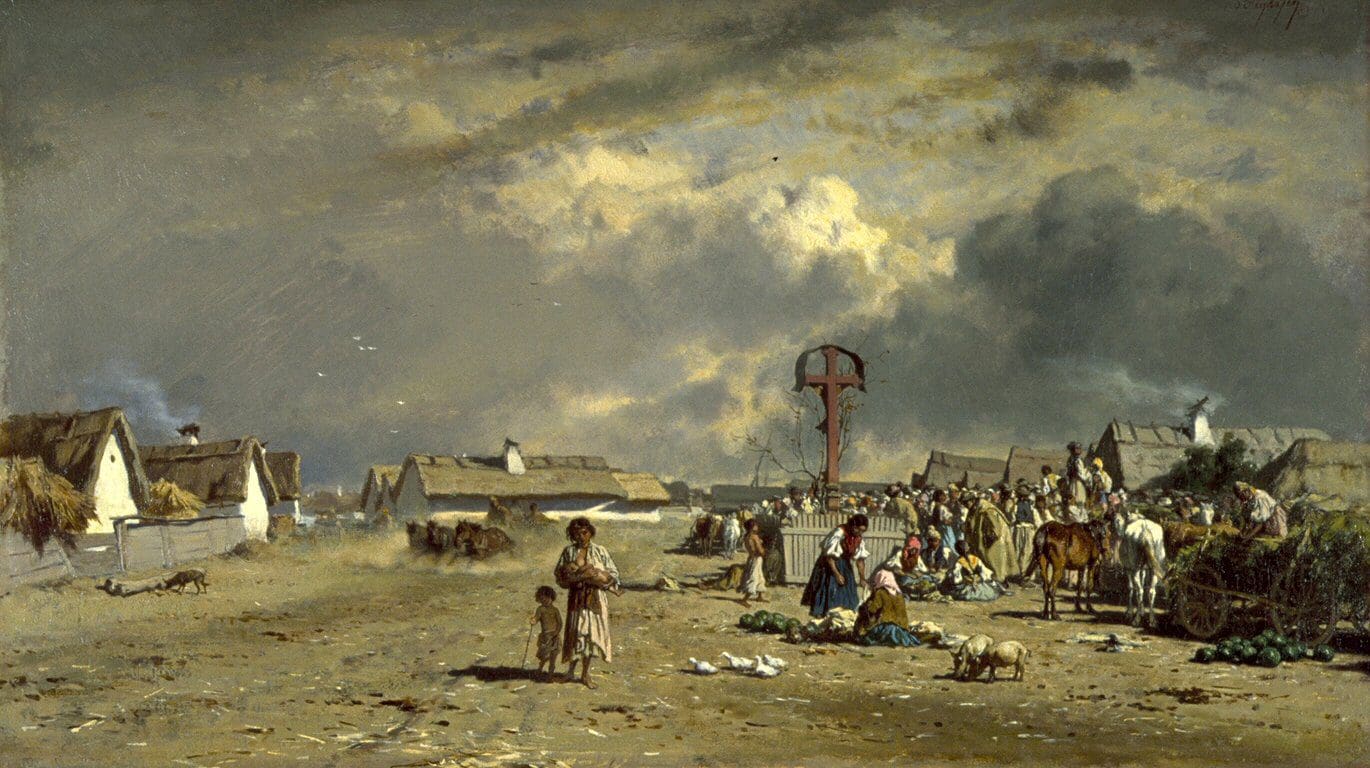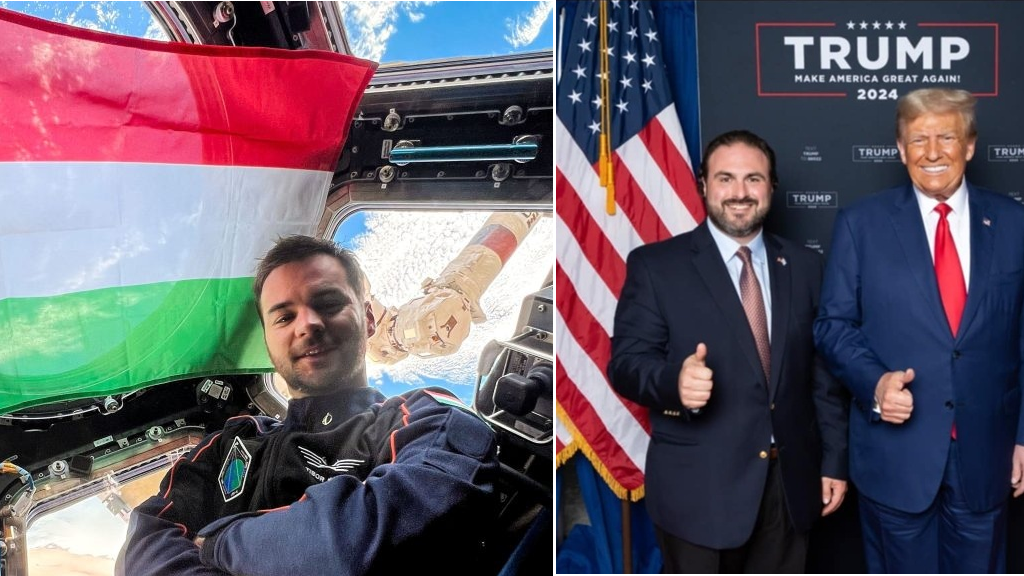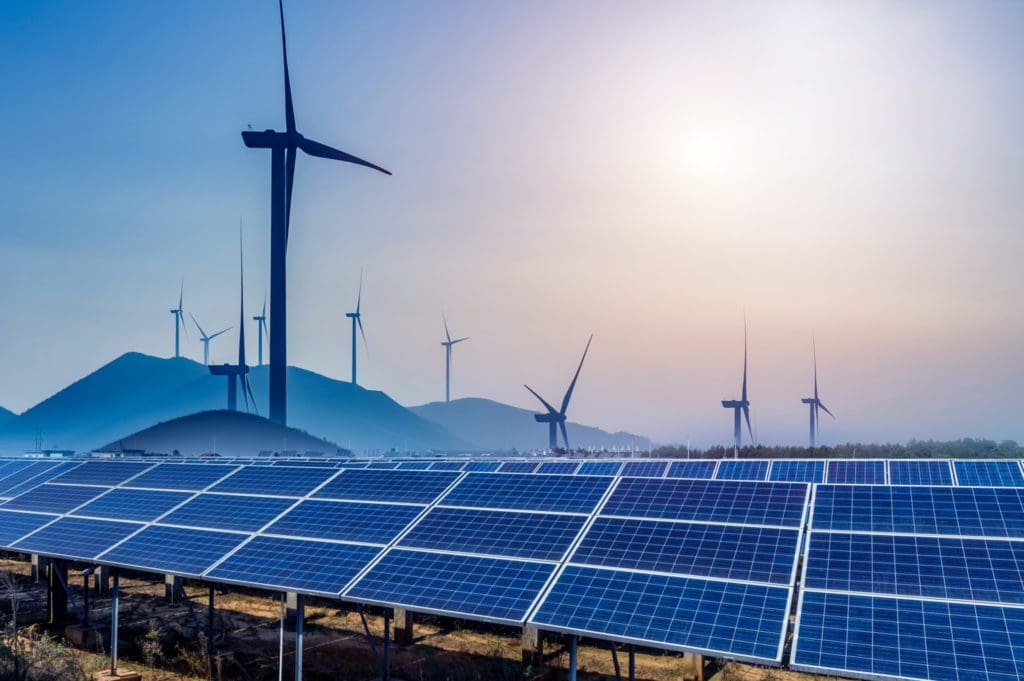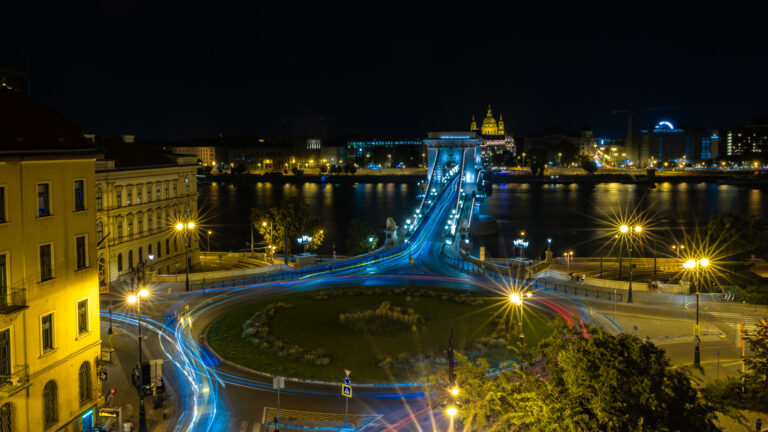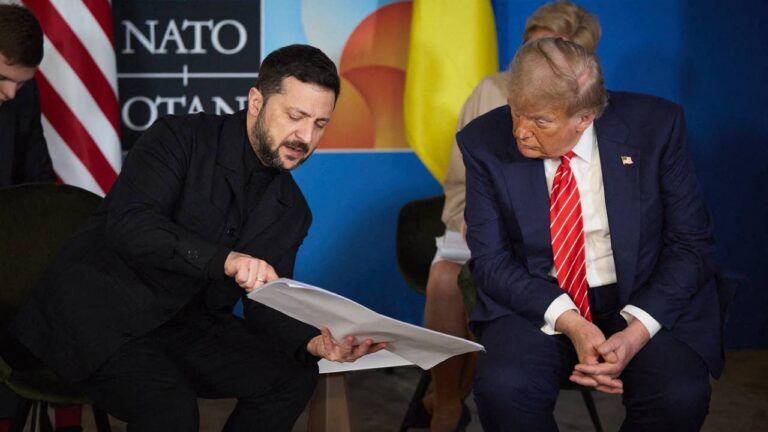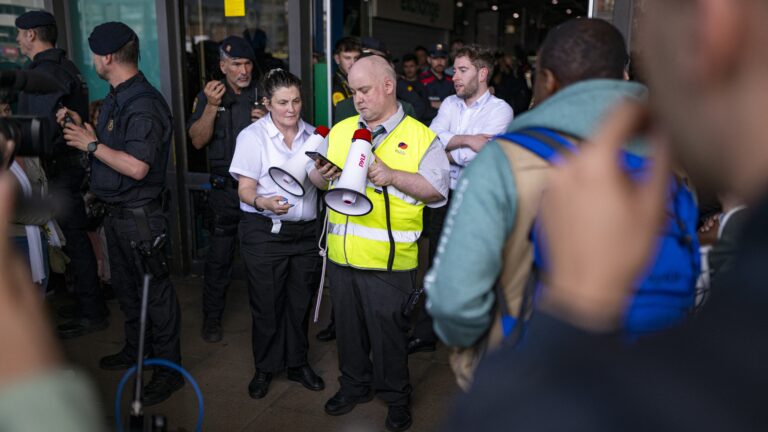On the Wednesday after the 2022 elections, Hungary’s prime minister held a press conference in which he said, among other things, that Hungary had entered a strategic vacuum: after what happened on 24 February and afterwards—for example in the city of Bucha—the old Hungarian foreign policy strategy on Russia is no longer viable, and there is no new one yet. But there will be one.
We have been pretty much in this state ever since. We do hope that the old strategy is already dead, but it is clear that the new strategy is not yet there—or even in sight. Rather, it seems to us that a lively search for a strategic path is currently going on.
The debates are about what kind of Hungary there should be, in what kind of world, and what path it should choose in wartime circumstances. Let us look at these three questions.
‘In What Kind of World?’
Above all, our world is characterised by the fact that our Ukrainian friends, with Western technological support, have been successfully defending themselves against Russian aggression and overwhelming force for more than a year. As a consequence, Russia has had to reduce its short-term ambitions from restoring full supremacy over Ukraine to territorial claims in a war Russia started, while Ukraine has been able to raise its own level of ambition from defending the territories under its control to defeating Russia, i.e., fully liberating the territories already occupied by the Russians.
On the basis of the war in Ukraine, we can therefore say, firstly, that
today’s world is a world of sovereign national wills:
the will of nations must be reckoned with by those actors who nurture great imperial ambitions and those who dream of a supranational world. Let me say in this context, on behalf of the Hungarians: Thank you, Ukraine!
Secondly, we can say that today’s world is a world of Western technological superiority—at least compared to Russian technological capabilities. The situation with China is a little more complicated. But it is no coincidence that Beijing—much more wisely than Moscow—is apparently wary of getting into an open military conflict with the United States. Thirdly, we can say that the main issue that defines the poles of world politics has now become the relationship with Russia. The big question that is currently dividing the world is whether, due to its aggression against Ukraine, Putin’s Russia should be de facto excluded from the great powers that determine the world order, or whether it is necessary to continue negotiating with it as an unpleasant but legitimate great power.
Given the relatively wide range of positions of EU and NATO members on this issue, the G7 is starting to emerge as the visible forum for those who want to exclude Putin’s Russia from the circle of legitimate great powers. There are nuances within the G7 too—as we have seen, for example, from the uproar over President Macron’s statements on his return from China, as a prelude to the G7 summit. But the Japanese presidency has nevertheless managed to unify the G7 members: they have been able to show unity not only on Ukraine and Russia, but even on China, and even on policy like the future of the world economy. Alongside the struggle for freedom in Ukraine, this is now the other most important development in world politics.
At the same time, despite the cruelty and failure of Russian military aggression so far, a significant international camp is emerging in favour of advocating for early negotiations with Russia, thus still qualifying Russia as a legitimate great power factor in world politics. About two dozen countries want to join the BRICS forum (the cooperation of Brazil, Russia, India, China, and South Africa), which per definicionem includes Russia.
The global power map can therefore best be described as the G7 pole and its philosophy opposing the BRICS pole and its philosophy.
And the rest of the world’s states are about to have to choose how they relate to them.
It is not certain, of course, that the denominations ‘G7’ and ‘BRICS’ will long be suitable to describe the identity of the two camps, since the G7 Heads of State and Government Summit invited several countries that are not members of the G7. These include not only Ukraine but also India and Brazil, which have been amongst the main pillars of BRICS. The not-so-secret aim was to lure these powers to switch to the G7 camp. It will become clear at the BRICS summit meeting in South Africa, planned for the summer, how successful this seduction has been. (If there will be such a summit with Russia at all, because South Africa is now under an international legal obligation to arrest President Putin.) It will also become clear sooner or later whether the BRICS can present a similarly comprehensive, sectoral worldview as the G7.
In addition to the relationship with the Russian superpower, there is another very important controversial issue in today’s world: the US–Chinese relationship. Some say that the tensions in this area threaten, if not a third world war, then at least a ‘new cold war’.
In this respect, it is very important to see the lines of force that the technological revolution based on digital algorithms have drawn in the world. What has emerged is a highly efficient, highly international, so-called ‘new economy’ driven by digital algorithms—or rather by the companies that control them. However, there are sectors that cannot be subordinated indefinitely to digital international value chains. An example of this is the corporate world of military industrial complexes, whose subordination to anyone else would raise serious questions of sovereignty. They have been mocked and labelled the ‘old economy’.
The US–China relationship is to a large extent defined by the fact that the majority of the main players in the ‘new economy’ are US or Chinese companies. At the same time, the ‘old economy’ has remained strong in both countries, simply because both superpowers need very strong and extensive military industries.
This is decisive from the point of view of the American–Chinese relationship because,
as a general rule, the players of both the American and the Chinese ‘new economy’ are interested in doing—what we might term ‘trans-Pacific’—business with each other in order to increase their own efficiency.
On the other hand, the defence industrial complex (and therefore essentially the backbone of the ‘old economy’) is, by its very nature, particularly sensitive on both sides to threats from the other superpower. This is especially true of military threats, but also of economic ones.
All of this together results in a dichotomy of cooperation and opposition in the relationship between the two sovereign superpowers: the United States and China. It is therefore unlikely that the two powers will become very close in the foreseeable future—but it is equally unlikely that they will become completely isolated from each other and start a cold war like that between the US and the Soviet Union.
This is reflected in the statement of the Hiroshima G7 summit, which expresses a twofold attitude regarding China. On the one hand, the G7 say that they are open to cooperation with China, and on the other hand, they list what they expect of China: not to support Moscow, not to attack Taiwan, not to try to change the world order by force, to protect the environment, etc.
So, there will be camps (blocs), and they will oppose each other. But they will also cooperate with each other. The direction of a country’s development might depend fundamentally on its identification with one camp or the other. That is how our world may look for a long time!
‘What Kind of Hungary?’
It is within this global context that the question ‘what kind of Hungary’ appears most pertinent.
What is Hungary like? The answer depends on how you look at it: from the inside or from the outside. This is very important because the two together make up the Hungarian reality. Hungary behaves in the world according to the way it sees itself. But its chances and room for manoeuvre are fundamentally influenced by the way it is perceived by other players on the international scene.
The alpha and omega of the Hungarian government’s foreign policy thinking is that it must maintain at all costs the successful development that led the country out of the severe economic and social crisis of the early 2010s, which had been worsening since 2006. To do so, Hungary is aiming to be at the forefront of global technological development within a decade or two. This is a declared aim.
Two things were needed for Hungary to emerge successfully from the crisis in the 2010s.
One was the security provided by NATO and EU membership. The other factor was the assertion of national interests that allowed the country to escape the economic and related social policies dictated by the EU institutions and international financial institutions—which were supposedly imposed to manage the crisis but in fact hindered successful crisis management.
In the latter, good relations with major powers outside the Western world played a significant role. Relations with these powers without economic and social policy preconditions—that is leaving the country free to choose its own path in these areas—expanded the financial room for manoeuvre of the Hungarian national economy. Russia also provided a stable energy partnership for crisis management at a relatively affordable price.
At the same time, in the context of the migration crisis, the Hungarian government noted that Western countries were being pushed towards a socio-security crisis by their own left-wing ideological determination, and they wanted to drag Hungary into this crisis—also through ideological diktats. However, national interest-based politics has successfully resisted these attempts. And during the 2020 coronavirus crisis, thanks to good Chinese and Russian relations, Hungary was able to get protective equipment and then vaccines before its European neighbours.
Then came 24 February 2022. Today, this is the greatest challenge: the threat of the war escalating, the various sanctions, the deteriorating relations between the great powers, and the downgrading of relations with the two post-communist great powers from the ‘tolerated’ to the ‘prohibited’ category (which powers—I repeat—have so far increased the room for manoeuvre against Western ideological conditionality).
Added to this is a specifically Hungarian tragedy, in that many Hungarians from Ukraine, those of the Sub-Carpathian region, are losing their lives at the front as Ukrainian soldiers.
From an internal perspective, Hungary is tackling this situation with the same strategy that proved successful in the 2010s. It is pursuing its national interest—i.e., consistently and continuously exercising its membership rights—and is not associating itself with the policies of other EU and NATO member states that would aggravate the current conflict situation. At the same time, it intends to maintain, as far as possible, its pragmatic cooperation with Russia and China, as well as with some of their allies, such as Belarus and Iran.
As part of its national interest, Hungary applies conditionality to countries that want to join NATO according to its own interests.
It expects Ukraine to restore minority rights and apply non-discriminatory investment policies, and Sweden to end undue criticism and pressure against Hungarian social policy in return for supporting their future membership.
In the meantime, Hungary is fully meeting its NATO commitments and obligations. Therefore, according to its own assessment, Hungary is clearly on the Western side of the ‘most important’ line of response in world politics, not in a servile way, but as a proud Western nation defending its own interests.
The problem with all this is that the rest of the international community today perceives the world not primarily through the lens of NATO commitments, but almost exclusively through the lens of Russian aggression against Ukraine. Of course, everyone—like Hungary—defines their relationship to what they see through these lenses, in terms of their own real or perceived interests. And, like everyone else, Hungary’s place on the political map is judged by international actors according to whether it appears to be an ally or an adversary.
What is the perception? Those looking from the outside see that Hungary is vocally opposed to supporting with weapons the Ukrainian struggle for freedom: this is not only beneficial for Hungarian interests, but also for Russia.
Hungary seizes every opportunity to push for an agreement with Russia as soon as possible.
This is also favourable for Russia. Hungary is blocking the NATO–Ukraine Council because of the minority rights violations of the Hungarians in Ukraine. This is also favourable for Russia. For a long time, Hungary blocked Finland’s and still blocks Sweden’s EU accession. This is also favourable for Russia. And we could go on…
From the outside, it all looks as if Hungary was consistently on the side of ‘BRICS and friends’ against ‘G7 and friends’ on what is really the most important faultline in todays’ world politics. This, of course, earns Hungary recognition in the circle of ‘BRICS and its friends’. But countries that, as a rule, identify their own interests with the ‘G7 and friends’ express not only a moral reservation against Hungary, but also a loss of confidence. If Hungary is de facto with the other side, as they see it, then the information and technologies entrusted to it will, in their interpretation, support the other side even if Hungary can demonstrate that it is doing everything it can to protect them from the opposing parties.
This is what is particularly dangerous for the Hungarian government’s medium and long-term strategy in the current situation. If this situation persists, it will not bring Hungary closer to the forefront of global development, the direction of which is currently set by the G7 but will hinder Hungary’s catching up. Hungary should avoid this! International communications play a crucial role in this. It is not enough to be good; one must also look good!
‘What Path Should Hungary Choose in Wartime Circumstances?’
In this wartime situation, any contemporary foreign policy strategy must be thought through according to three timelines: 1) the first is the period until the ceasefire; 2) the second is the period between the ceasefire and the peace agreement; 3) the third is the period after the peace agreement.
Timeline two is the most important for the outcome of the war. This is where the outcome of the war will be decided. When we say that we need a sustainable peace and a just peace, we are basically talking about the objective to be attained in this timeline.
But the most important timeline in terms of strategic prospects is the third timeline: this is when the bulk of Ukraine’s reconstruction will take place, and when the new post-war world will emerge, both at the Central European and the global level.
And in terms of human lives—in terms of how many young Ukrainians are given a chance in life—the most important timeline is the first one, from now until the ceasefire.
The debate between Hungary and some other Central European countries is about Hungary wanting to shorten the first timeline, the period until the ceasefire, as much as possible.
The tactic of the other Central European countries is to create a situation in this period that will make it self-evident that we can achieve our goals in the second timeline—in essence, to shorten and facilitate the second period (between the ceasefire and the peace agreement).
At the same time, everyone—Hungary and others—have a common interest both in shortening the first period and in realising our goals for the second period: restoring Ukraine’s territorial integrity and creating a situation in which Russia ceases to be a threat to Europe and its neighbours.
The only question is whether this can be achieved in the way the Hungarian government envisages it: at the negotiating table. We think it is achievable—as it was in 1989–1991—but there is no doubt that it is more difficult to achieve, and demands a much longer transition period. Therefore, the price of shortening the first timeline (the one until the ceasefire) will most likely result in a lengthening of the second timeline (until the peace agreement). We have no doubt that to achieve our goals through an early ceasefire and then long and difficult negotiations, we need to remain on speaking terms with the aggressor. That is the other big difference! Hard to tell who is right! However, it is also hard not to accept that there may be a situation in which it would be good for our common goals if someone among us could achieve results in Moscow. It may never happen. But I would suggest that we should be prepared for it—and try to see the possibility of a division of labour in the current debates.
However, the Hungarian strategy must take into account that Hungary will pay a heavy price for assuming this ‘reserve’ role.
As I have already mentioned, the price we pay is that those who look at us from outside may mix us up with the Chinese—or even with the Russians. This could pose challenges for Hungary, especially in the third timeline—after the peace agreement, in the consolidation phase. Therefore, I recommend to the makers of Hungarian strategy that we consider very seriously the role the G7 countries play today in shaping the world of tomorrow. Let us join everything that is good and suits our common interests.
It is high time to start building a close strategic partnership with the new member of the ‘Central European family’ that—as the only one of us—got a seat at the G7 table while it is fighting a heroic fight for freedom to regain its occupied territories: i.e., Ukraine. The greatest poet of the Hungarian Enlightenment said to the Hungarians of the time: ‘Cast your watchful eyes on Paris!’ If he were alive today, he would say: ‘Cast your eyes on Hiroshima!’ and ‘Cast your watchful eyes on Kyiv and Uzhgorod (Ungvár)!’ So let us listen to him!
Talk given at the conference on ‘The New Geo-Strategic Environment for Transatlantic Cooperation and Values’, organised by the Centre for the Advancement of Security and Politics in Euro-Atlantic Relations in Budapest on 27 May 2023.

